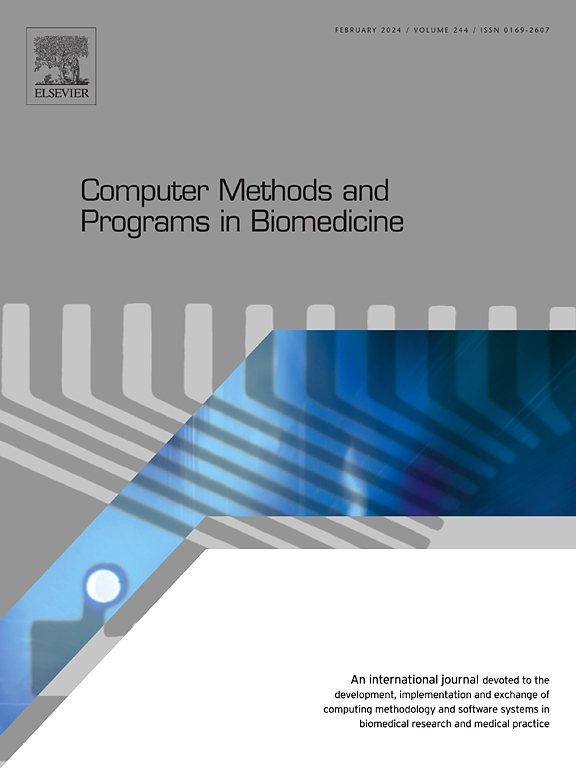MIRA: Myocardial insulin resistance app for clinical practice
IF 4.9
2区 医学
Q1 COMPUTER SCIENCE, INTERDISCIPLINARY APPLICATIONS
引用次数: 0
Abstract
Background and Objective
Type 2 diabetes (T2D) is a prevalent disease characterized by insulin resistance (IR), leading to energy disruptions in myocardial cells and increasing cardiovascular (CV) risk. Current diagnostic methods are either systemic, thus lacking tissue-specific information, or invasive. The hyperinsulinemic euglycemic clamp (HEC) combined with [18F]FDG-PET images, only used in clinical trials, allow to assess regional IR and identify phenotypes within T2D, linking myocardial IR to higher CV risk. However, phenotyping is not easily accessible, creating a need for alternative assessment tools. Thus, we propose a myocardial IR model to address these gaps and improve T2D management.
Methods
The study included forty-two patients with T2D who enrolled in a clinical trial (NCT02248311) and who underwent biochemical analyses, anthropometric measurements and [18F]FDG PET/CT imaging before and after HEC with. Patients were phenotyped into mIR and mIS according to poor or good uptake after HEC, respectively. The proposed predictive model was based on stepwise regression including feature selection to provide an estimate of myocardial IS and thus IR=1/IS by using biochemical parameters in T2D. A software application, the myocardial IR app (MIRA), was developed using MATLAB.
Results
MIRA was developed as a myocardial IR estimator (R2=0.97, p=7.1 × 10–7, error=1.24) for patients with T2D. Moreover, since HEC is not allowed in rutinary clinical practice, the application includes a prediction of the expected myocardial HEC [18F]FDG uptake from baseline uptake (r=0.52, p=5 × 10–4, R2=0.60). The app also yields the patient's phenotype, either mIR or mIS, according to poor or good uptake after HEC. Enhanced CV risk exposure due to altered T2D biomarkers and associated to mIR is also provided with highlighted features.
Conclusions
We hereby present MIRA, a myocardial IR calculation app to manage myocardial-specific affectation in T2D, as well as to provide with patient phenotyping and CV risk assessment.
求助全文
约1分钟内获得全文
求助全文
来源期刊

Computer methods and programs in biomedicine
工程技术-工程:生物医学
CiteScore
12.30
自引率
6.60%
发文量
601
审稿时长
135 days
期刊介绍:
To encourage the development of formal computing methods, and their application in biomedical research and medical practice, by illustration of fundamental principles in biomedical informatics research; to stimulate basic research into application software design; to report the state of research of biomedical information processing projects; to report new computer methodologies applied in biomedical areas; the eventual distribution of demonstrable software to avoid duplication of effort; to provide a forum for discussion and improvement of existing software; to optimize contact between national organizations and regional user groups by promoting an international exchange of information on formal methods, standards and software in biomedicine.
Computer Methods and Programs in Biomedicine covers computing methodology and software systems derived from computing science for implementation in all aspects of biomedical research and medical practice. It is designed to serve: biochemists; biologists; geneticists; immunologists; neuroscientists; pharmacologists; toxicologists; clinicians; epidemiologists; psychiatrists; psychologists; cardiologists; chemists; (radio)physicists; computer scientists; programmers and systems analysts; biomedical, clinical, electrical and other engineers; teachers of medical informatics and users of educational software.
 求助内容:
求助内容: 应助结果提醒方式:
应助结果提醒方式:


